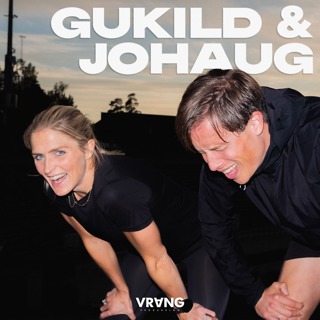
Fashion's Transformative 2025: Navigating Economic Headwinds and Embracing Sustainability
The global fashion industry is poised for a transformative year in 2025, marked by a blend of opportunities and challenges. According to the McKinsey & Company’s State of Fashion 2025 report, the industry faces economic headwinds, shifting consumer behaviors, and the need to embrace sustainability while navigating complex global trade dynamics.Economic growth in the fashion industry is expected to be sluggish, with a low single-digit rate in 2025, reflecting economic deceleration and muted consumer confidence. Non-luxury segments are expected to outperform luxury, marking a significant shift in profit drivers. Europe is set to benefit from increased tourism and lower inflation, while the U.S. market relies on resilient spending by high-net-worth individuals. Meanwhile, Asia remains a focus, but China’s slowing growth is prompting brands to look toward India, Japan, and Korea for expansion opportunities.Consumer behavior is undergoing a dramatic transformation, with value-consciousness and demographic shifts taking center stage. Amid economic uncertainty, shoppers are prioritizing affordability and practicality, driving growth in segments like resale, off-price, and “dupes.” Sustainability continues to be a defining challenge for the fashion industry in 2025, with regulatory pressures mounting and the climate crisis intensifying. Brands must innovate to reduce waste, lower emissions, and embrace circularity.Inventory challenges are also a pressing issue, with the industry producing 2.5 to 5 billion excess items in 2023, valued at $70 to $140 billion. This highlights the urgent need for improved demand forecasting and inventory management. About 63% of fashion brands need to accelerate their sustainability efforts to meet 2030 emission targets. Investments in renewable energy, such as Bangladesh’s commitment to 40% renewable power by 2041, offer a model for achieving these goals.Technology is playing a crucial role in addressing these challenges. AI and digital innovation are being leveraged for product discovery, demand forecasting, and supply chain optimization to improve efficiency and customer experience.Fashion industry leaders are responding to these challenges by diversifying sourcing beyond China, enhancing sustainability efforts, leveraging AI and technology, targeting overlooked demographics, and adapting to consumer trends. For instance, brands are expanding sourcing to include nearshoring and emerging markets like Vietnam and India. They are also investing in renewable energy and circular production models to meet emission reduction targets.Compared to previous reporting, the current conditions are more challenging. In 2023, the industry was expected to grow at a slower rate than in 2022, with growth projected between negative 2% and positive 3%. The luxury segment was expected to show more resilience, with sales projected to grow 5% to 10% in 2023. However, the current outlook for 2025 is more pessimistic, with only 20% of fashion executives expecting improved consumer sentiment and 39% forecasting worsening conditions.In conclusion, the fashion industry in 2025 is characterized by sluggish growth, shifting consumer behaviors, and the need to embrace sustainability. Industry leaders must navigate these challenges by diversifying sourcing, enhancing sustainability efforts, leveraging AI and technology, targeting overlooked demographics, and adapting to consumer trends. By doing so, they can unlock new revenue streams and drive growth in a complex and uncertain market.This content was created in partnership and with the help of Artificial Intelligence AI
24 Jan 4min

Fashion 2025: Navigating Economic Headwinds, Consumer Shifts, and Sustainability Challenges
The fashion industry is poised for a transformative year in 2025, marked by a blend of opportunities and challenges. According to the McKinsey & Company's State of Fashion 2025 report, the industry faces economic headwinds, shifting consumer behaviors, and the need to embrace sustainability while navigating complex global trade dynamics.The global fashion industry is expected to grow at a low single-digit rate in 2025, reflecting economic deceleration and muted consumer confidence. Non-luxury segments are expected to outperform luxury, marking a significant shift in profit drivers. Europe is set to benefit from increased tourism and lower inflation, while the U.S. market relies on resilient spending by high-net-worth individuals. Asia remains a focus, but China's slowing growth is prompting brands to look toward India, Japan, and Korea for expansion opportunities.Consumer behavior is undergoing a dramatic transformation, with value-consciousness and demographic shifts taking center stage. Amid economic uncertainty, shoppers are prioritizing affordability and practicality, driving growth in segments like resale, off-price, and "dupes." Sustainability continues to be a defining challenge for the fashion industry in 2025, with regulatory pressures mounting and the climate crisis intensifying. Brands must innovate to reduce waste, lower emissions, and embrace circularity.The industry produced 2.5 to 5 billion excess items in 2023, valued at $70 to $140 billion, highlighting the urgent need for improved demand forecasting and inventory management. About 63% of fashion brands need to accelerate their sustainability efforts to meet 2030 emission targets. Investments in renewable energy, such as Bangladesh's commitment to 40% renewable power by 2041, offer a model for achieving these goals.Fashion leaders are responding to current challenges by diversifying sourcing beyond China, investing in renewable energy, and leveraging AI and technology for product discovery, demand forecasting, and supply chain optimization. They are also targeting overlooked demographics, such as the "Silver Spenders," to unlock new revenue streams.Compared to previous reporting, the industry's outlook for 2025 appears to be a continuation of the sluggishness seen in 2024. However, there are opportunities for growth, particularly in non-luxury segments and emerging markets. The industry's resilience will depend on its ability to navigate complex global trade dynamics, shifting consumer behaviors, and sustainability challenges.In conclusion, the fashion industry in 2025 stands at a pivotal moment, shaped by economic uncertainty, technological innovation, and sustainability challenges. Success in this evolving landscape will require agility, innovation, and a deep understanding of regional and consumer dynamics. By embracing these priorities, industry players can position themselves for growth and resilience in the face of ongoing disruption.This content was created in partnership and with the help of Artificial Intelligence AI
23 Jan 3min

Navigating the Fashion Industry's Uncertain Future in 2025: Strategies for Growth and Resilience
The fashion industry enters 2025 amidst a backdrop of economic uncertainty, shifting consumer priorities, and technological advancements. According to McKinsey's latest report, The State of Fashion 2025, revenue growth is projected to stabilize in the low single digits, marking a shift away from the luxury-led recovery of previous years[1][4].For the first time in over a decade, non-luxury segments are driving profit growth, reflecting consumers' growing preference for value-driven options. However, only 20% of industry leaders expect improved consumer sentiment, citing high inflation, geopolitical tensions, and demographic shifts as key concerns[1][4].Geographically, Asia's role in fashion is diversifying. With China's economic growth slowing, markets like India, Japan, and South Korea are stepping into the spotlight. Europe, on the other hand, faces a gloomy outlook, with GDP growth expected to be less than 1% in 2025 and inflation undermining consumer confidence[1][3].The industry is also grappling with the rise of dupes, the acceleration of climate change, and the continued reshuffling of global trade. Regional differences, which came into focus in 2024, will become even starker in the coming year[1].In response to these challenges, fashion industry leaders are focusing on cost control, strategic investments in skills growth, and leveraging technology to drive profitability and customer engagement. For instance, ANDMORE is launching new initiatives in 2025, including Market Insiders, New Buyer Meet & Greet, and Taste of Atlanta, designed to share market expertise, foster connection, and encourage exploration[2].Technology will be critical for fashion businesses in 2025, with success hinging on collaborating with partners, using best-in-class technology tools, and implementing actionable strategies. Lectra's technology, for example, simplifies the journey by supporting and empowering its fashion industry partners[5].Compared to previous years, the industry's outlook is more subdued. In 2023, the industry's sales were expected to grow at a slower rate than in 2022, with a significant share of sales affected by rising costs and prices[3]. The current conditions are a continuation of this trend, with the industry facing a particularly tumultuous and uncertain 2025.In conclusion, the fashion industry in 2025 is characterized by sluggish growth, shifting consumer priorities, and technological advancements. Industry leaders must navigate a maze of compounding challenges to seize growth opportunities, with a focus on cost control, strategic investments, and leveraging technology to drive profitability and customer engagement.This content was created in partnership and with the help of Artificial Intelligence AI
22 Jan 3min

Navigating the Fashion Industry's Transformation in 2025: Adapting to Economic Shifts, Sustainability, and Changing Consumer Behaviors
The fashion industry is poised for a transformative year in 2025, marked by a blend of opportunities and challenges. According to the McKinsey & Company’s State of Fashion 2025 report, the industry faces economic headwinds, shifting consumer behaviors, and the need to embrace sustainability while navigating complex global trade dynamics.Economic growth in the fashion industry is expected to be sluggish, with a low single-digit rate in 2025, reflecting economic deceleration and muted consumer confidence. Non-luxury segments are expected to outperform luxury, marking a significant shift in profit drivers. Europe is set to benefit from increased tourism and lower inflation, while the U.S. market relies on resilient spending by high-net-worth individuals. Asia remains a focus, but China’s slowing growth is prompting brands to look toward India, Japan, and Korea for expansion opportunities[1][3].Consumer behavior is undergoing a dramatic transformation, with value-consciousness and demographic shifts taking center stage. Amid economic uncertainty, shoppers are prioritizing affordability and practicality, driving growth in segments like resale, off-price, and “dupes.” Sustainability continues to be a defining challenge for the fashion industry in 2025, with regulatory pressures mounting and the climate crisis intensifying. Brands must innovate to reduce waste, lower emissions, and embrace circularity[1][3].Inventory management is a critical issue, with the industry producing 2.5 to 5 billion excess items in 2023, valued at $70 to $140 billion. This highlights the urgent need for improved demand forecasting and inventory management. About 63% of fashion brands need to accelerate their sustainability efforts to meet 2030 emission targets. Investments in renewable energy, such as Bangladesh’s commitment to 40% renewable power by 2041, offer a model for achieving these goals[1].Technology plays a crucial role in navigating these challenges. AI and digital innovation are essential for product discovery, demand forecasting, and supply chain optimization to improve efficiency and customer experience. Brands are increasingly collaborating with suppliers and regulators to drive large-scale decarbonization initiatives[1][3].In response to these challenges, fashion industry leaders are diversifying sourcing beyond China to include nearshoring and emerging markets like Vietnam and India. They are also enhancing sustainability by investing in renewable energy, circular production models, and collaborative initiatives to meet emission reduction targets. Targeting overlooked demographics, such as the “Silver Spenders,” and adapting to consumer trends by offering value-driven products while maintaining quality are also key strategies[1][3].Compared to the previous reporting period, the industry’s outlook has become more cautious. In 2023, the industry was expected to grow at a slower rate than in 2022, with luxury segments showing more resilience. However, the current environment is marked by a long-feared cyclical slowdown, with consumers increasingly price-sensitive and regional differences becoming starker[2][3].In conclusion, the fashion industry in 2025 stands at a pivotal moment, shaped by economic uncertainty, technological innovation, and sustainability challenges. Success in this evolving landscape will require agility, innovation, and a deep understanding of regional and consumer dynamics. By embracing these priorities, industry players can position themselves for growth and resilience in the face of ongoing disruption.This content was created in partnership and with the help of Artificial Intelligence AI
20 Jan 4min

Fashion's Transformative Landscape: Navigating the Industry's Opportunities and Challenges in 2025
The current state of the fashion industry is marked by a blend of challenges and opportunities. According to the McKinsey & Company's "State of Fashion 2025" report, the industry is expected to grow at a low single-digit rate in 2025, reflecting economic deceleration and muted consumer confidence[1][3].Key trends include a shift towards value-consciousness and demographic shifts, with consumers prioritizing affordability and practicality. This has driven growth in segments like resale, off-price, and "dupes" - cheaper alternatives to high-end products[1][3]. Sustainability continues to be a defining challenge, with regulatory pressures mounting and the climate crisis intensifying. Brands must innovate to reduce waste, lower emissions, and embrace circularity[1].Geographic drivers are also undergoing historic shifts. Europe is set to benefit from increased tourism and lower inflation, while the U.S. market relies on resilient spending by high-net-worth individuals. Meanwhile, Asia remains a focus, but China's slowing growth is prompting brands to look towards India, Japan, and Korea for expansion opportunities[1][3].Inventory challenges are significant, with the industry producing 2.5 to 5 billion excess items in 2023, valued at $70 to $140 billion. This highlights the urgent need for improved demand forecasting and inventory management[1].Technology plays a crucial role, with AI and digital innovation being key to product discovery, demand forecasting, and supply chain optimization. Brands are increasingly collaborating with suppliers and regulators to drive large-scale decarbonization initiatives[1].Consumer sentiment is cautious, with only 20% of fashion executives surveyed expecting improved consumer sentiment in 2025, while 39% forecast worsening conditions[1][3].In response to these challenges, industry leaders are focusing on diversifying sourcing beyond China, enhancing sustainability, leveraging AI and technology, targeting overlooked demographics like the "Silver Spenders," and adapting to consumer trends by offering value-driven products while maintaining quality[1][3].Compared to the previous reporting period, the industry's growth has slowed down significantly. In 2023, the industry's sales were expected to grow at a slower rate than in 2022, with luxury segments showing more resilience[2]. The current year is expected to be particularly tumultuous and uncertain, with a long-feared cyclical slowdown arriving, and consumers becoming increasingly price sensitive due to recent high inflation[3].Overall, the fashion industry in 2025 stands at a pivotal moment, shaped by economic uncertainty, technological innovation, and sustainability challenges. Success will require agility, innovation, and a deep understanding of regional and consumer dynamics. By embracing these priorities, industry players can position themselves for growth and resilience in the face of ongoing disruption.This content was created in partnership and with the help of Artificial Intelligence AI
19 Jan 3min

Navigating Fashion's Uncertain Future: Industry Trends and Strategies for 2025
The current state of the fashion industry is marked by significant challenges and shifts in consumer behavior, market dynamics, and supply chain developments. According to the latest report from McKinsey, titled "The State of Fashion 2025: Challenges at every turn," the industry is expected to experience sluggish but stable revenue growth in 2025, with nonluxury driving the entirety of the increase in economic profit for the first time since 2010, excluding the Covid-19 pandemic[1][3][5].Key factors contributing to this sluggish growth include high inflation, which has made consumers increasingly price sensitive, the surprising rise of dupes, the acceleration of climate change, and the continued reshuffling of global trade. Regional differences, which became more pronounced in 2024, are expected to become even starker in 2025[1][3].The industry is also witnessing a shift in consumer behavior, with brands needing to engage with the "Silver Generation" of consumers aged over 50. This demographic holds significant wealth, with 72% of total U.S. population wealth accounted for by people over the age of 55. Brands that successfully engage these previously overlooked shoppers while creating inter-generational appeal are expected to unlock incremental growth[5].In terms of market movements, falling inflation and increased tourism in Europe are expected to benefit the fashion industry, along with high-net-worth consumers in the U.S. New growth opportunities in Asia, particularly in Japan, Korea, and India, may counteract some of the continued uncertainty surrounding consumer spending in China[1][3].Supply chain developments are also critical, with brands reevaluating their sourcing footprints in Asia and laying the foundations for nearshoring. The industry is expected to accelerate its reconfiguration of supply chains to prioritize nearshoring and manufacturing in geopolitically aligned countries, driven by rising costs, evolving trade policies, and sustainability targets[1][3].Comparing current conditions to the previous reporting period, the industry's outlook has become more pessimistic. In the BoF-McKinsey State of Fashion Executive Survey, only 20% of executives expect improvements in consumer sentiment in 2025, while 39% see industry conditions worsening. This contrasts with the cautious optimism seen heading into 2022, when 91% of executives predicted market conditions would improve or remain the same[2][3].In conclusion, the fashion industry is facing a particularly tumultuous and uncertain 2025, with sluggish growth, shifting consumer behavior, and significant supply chain challenges. Industry leaders are responding by diversifying their sourcing footprints, engaging with new consumer demographics, and adapting to changing market dynamics. The ability to navigate these challenges will be crucial for brands to seize growth opportunities in the coming year.This content was created in partnership and with the help of Artificial Intelligence AI
17 Jan 3min

Fashion 2025: Navigating Challenges and Seizing Opportunities
The fashion industry is entering 2025 with a mix of challenges and opportunities. According to the latest McKinsey report, the industry is expected to experience sluggish growth, with revenue growth stabilizing in the low single digits[1][4]. This is a continuation of the trend seen in 2024, where non-luxury segments drove the increase in economic profit for the first time since 2010, excluding the COVID-19 pandemic.Consumer behavior is shifting, with price sensitivity increasing due to recent high inflation. The rise of "dupes" and the acceleration of climate change are also impacting the industry. Regional differences, which became more pronounced in 2024, are expected to become even starker in 2025[1][4].Despite these challenges, there are pockets of growth to be found. Fashion leaders are responding by diversifying their sourcing footprint in Asia and laying the foundations for nearshoring. India is emerging as a focus for high-street players, while Japan's luxury boom is expected to continue into 2025[4].Brand collaborations are also on the rise, with top designers and major labels uniting to produce fresh collections that merge aesthetics, technology, sustainability, and cultural storytelling. Examples include Louis Vuitton's re-edition collection with Takashi Murakami, Cecilie Bahnsen's collaboration with The North Face, and Balenciaga's partnership with Under Armour[2][5].In terms of supply chain developments, the industry is expected to see a shift towards more sustainable and resilient supply chains. The use of AI-powered curation across content and search is also on the horizon, which will help brands to better engage with consumers and improve conversion rates[4].Compared to the previous reporting period, the industry's outlook is more pessimistic, with only 20% of fashion leaders expecting improvements in consumer sentiment in 2025, while 39% see industry conditions worsening[1][4].In conclusion, the fashion industry is facing a complex and challenging environment in 2025. However, by navigating these challenges and seizing opportunities, fashion leaders can find pockets of growth and drive success in the year ahead.Statistics and data:- Revenue growth is expected to stabilize in the low single digits in 2025[1][4].- Non-luxury segments drove the increase in economic profit in 2024 for the first time since 2010, excluding the COVID-19 pandemic[1][4].- 20% of fashion leaders expect improvements in consumer sentiment in 2025, while 39% see industry conditions worsening[1][4].- India is emerging as a focus for high-street players, while Japan's luxury boom is expected to continue into 2025[4].This content was created in partnership and with the help of Artificial Intelligence AI
15 Jan 3min

Fashion Industry Faces Turbulent 2025: Rising Inflation, Sustainability Demands, and Global Shifts
The global fashion industry is entering 2025 with a particularly tumultuous and uncertain outlook. According to the latest BoF-McKinsey State of Fashion Executive Survey, 80% of executives expect no improvement in the industry, with 39% anticipating worsening conditions[1][3][5].The industry's revenue growth is expected to stabilize in the low single digits, a continuation of the sluggishness seen in 2024. This is largely due to consumers becoming increasingly price sensitive following a period of high inflation. The long-feared cyclical slowdown has arrived, and regional differences will become even starker in the coming year[1][3][5].One of the key shifts in consumer behavior is the rise of "dupes," or affordable alternatives to luxury brands. This trend, combined with the acceleration of climate change and the reshuffling of global trade, means that fashion brands must navigate a complex maze of challenges to find pockets of growth[3][5].In response to these challenges, fashion leaders are diversifying their sourcing footprint in Asia, particularly in countries other than China. India is expected to be a focus for high-street players, while Japan's luxury boom is expected to continue into 2025[1][5].Supply chain developments are also a key area of focus. Retailers are accelerating their reconfiguration of supply chains to prioritize nearshoring and manufacturing in geopolitically-aligned countries. This is driven by the need to reduce excess inventory and minimize the risk of shortfalls[1][3].Regulatory changes are also impacting the industry. Governments around the world are increasing pressure on fashion brands to reduce emissions and fashion waste. This is driving advances in inventory management, with new technology aiding these efforts[1][3].In terms of market movements, the luxury segment is expected to show more resilience than other categories. However, even luxury brands are not immune to the challenges facing the industry. The McKinsey Global Fashion Index forecasts that non-luxury will drive the entirety of the increase in economic profit for the first time since 2010[3][5].Overall, the fashion industry is facing a time of reckoning in 2025. Brands must be agile and adaptable to navigate the complex challenges ahead. By diversifying their sourcing footprint, investing in new technology, and prioritizing sustainability, fashion leaders can find pockets of growth in a tumultuous market.Key statistics:- 80% of executives expect no improvement in the global fashion industry in 2025[5].- 39% of executives anticipate worsening conditions in 2025[1][3][5].- Revenue growth is expected to stabilize in the low single digits in 2025[1][3][5].- Non-luxury is expected to drive the entirety of the increase in economic profit for the first time since 2010[3][5].This content was created in partnership and with the help of Artificial Intelligence AI
13 Jan 3min





















